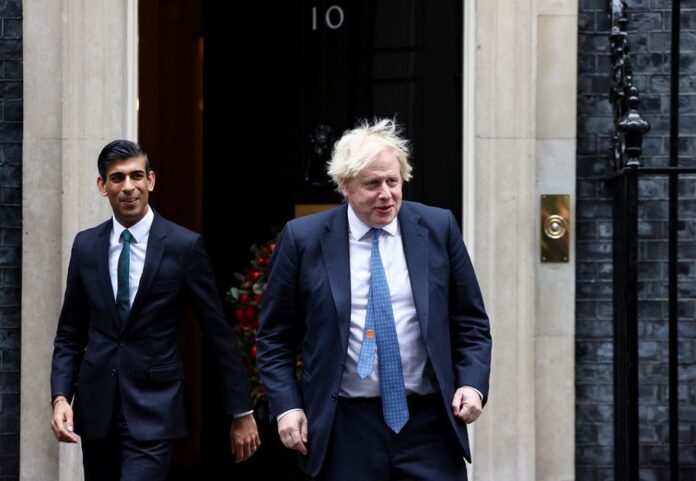Boris Johnson and his former finance minister Rishi Sunak were leading the potential contenders to replace British Prime Minister Liz Truss on Friday, with candidates canvassing support to become Conservative Party leader in a fast-tracked contest, according to Reuters.
After Truss quit on Thursday, ending her six weeks in power, those who want to replace her were trying to find the 100 votes from Conservative lawmakers. The winner will be announced on either Monday or Friday next week.
In what would be an extraordinary comeback, Johnson, who was ousted by lawmakers just over three months ago, was running high up the ranks alongside Sunak to be crowned the next prime minister.
Johnson, who left office might face difficulty in reaching the 100 votes after his three-year tenure was blighted by scandals and allegations of misconduct.
One of his former advisers, who no longer speaks to Johnson and requested not to be identified, said he was unlikely to reach the target, having alienated dozens of Conservatives during his scandal-ridden tenure.
The contest began on Thursday, hours after Truss stood in front of her Downing Street office to say she could not go on.
Sunak, the former Goldman Sachs analyst who became finance minister just as the COVID-19 pandemic arrived in Europe and was runner-up to Truss in the previous leadership contest this summer, is favourite with bookmakers, followed by Johnson.
Running in third is Penny Mordaunt, a former defence minister popular with party members. None have formally declared their candidacy.
Truss quit following the shortest, most chaotic tenure of any British prime minister after her economic programme shattered the country’s reputation for financial stability and left many people poorer.
Some Conservative lawmakers hope the race to replace her will be quick and simple, urging the hopefuls to coalesce around one candidate to reduce the pain of another bruising contest.
The next leader faces a difficult economic situation, inheriting an economy heading for recession, inflation topping 10%, rising interest rates, labour shortages, and a cost-of-living squeeze.


